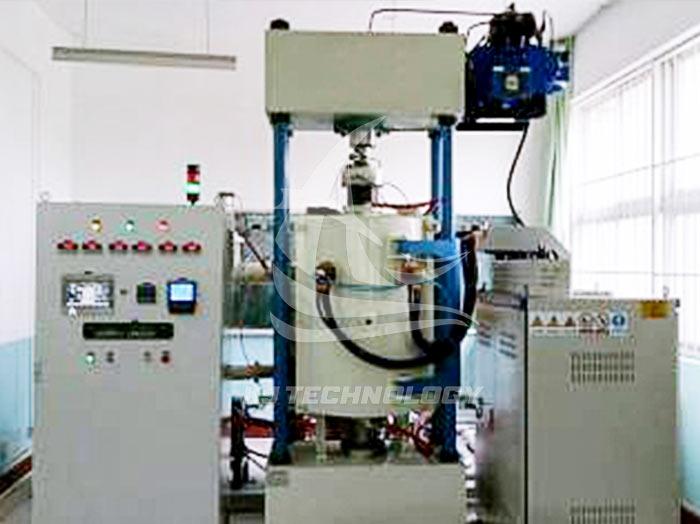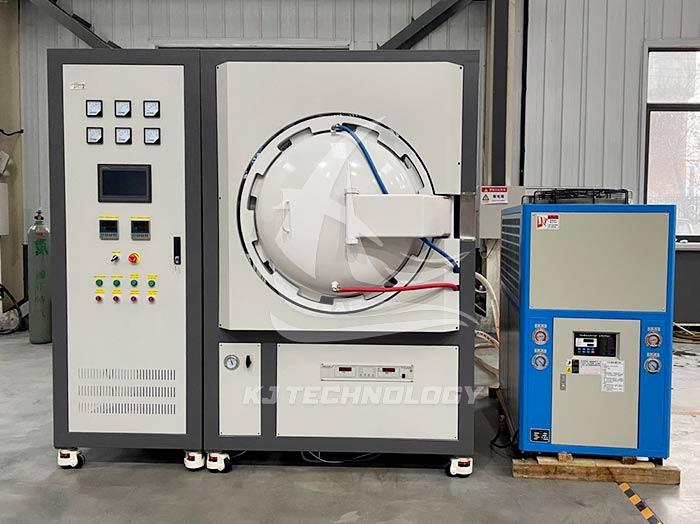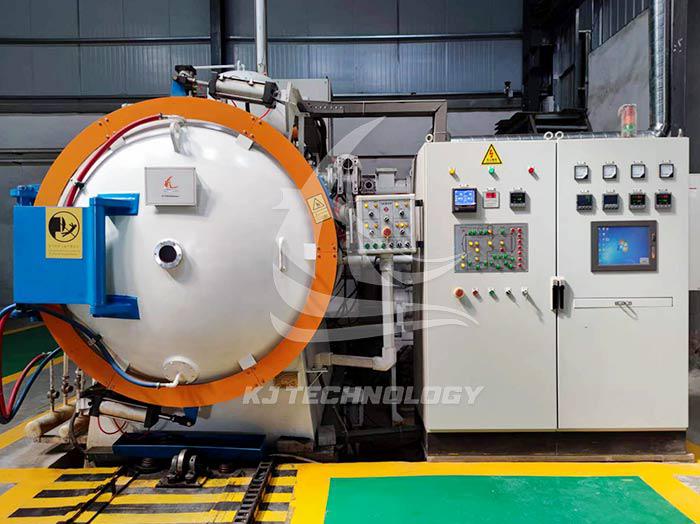Atmosphere vacuum powder sintering furnace
 06-04-2025 Author: KJ technology
06-04-2025 Author: KJ technology
Atmosphere vacuum powder sintering furnace is an advanced heat treatment equipment that combines vacuum technology and atmosphere control technology, and has wide applications in powder metallurgy, new material preparation and other fields.
Working principle
Place the sintered powder material in the furnace, and quickly remove the air and impurities inside the furnace through a vacuum pump system, creating a near oxygen free environment to prevent the material from oxidizing at high temperatures. Subsequently, according to the process requirements, the type of atmosphere introduced is regulated, such as inert gases (argon, nitrogen) or reducing gases (hydrogen). These gases can not only effectively prevent material oxidation, but also promote specific chemical reactions such as deoxidation, reduction, or carburizing, thereby achieving fine control over the microstructure and properties of the material. At the same time, the material is heated using heating elements to complete the sintering process under set temperature, pressure, and atmosphere conditions.
Advantages and Characteristics
Good temperature uniformity: The tubular design allows the heating space inside the furnace to be distributed in a tubular shape, and heat can be evenly transferred along the tube wall, effectively avoiding local overheating or undercooling, ensuring temperature uniformity of powder materials during sintering, and improving product consistency and stability.
Flexible atmosphere regulation: Different gases can be introduced according to different powder materials and sintering process requirements, creating a specific chemical reaction environment to promote material sintering and modification.
Excellent atmosphere sealing: The sealing structure of the tube furnace is well-designed, which can effectively prevent external gases from entering the furnace, ensure the stability and purity of the atmosphere inside the furnace, ensure the sintering effect of powder materials, and prevent powder leakage into the external environment, reducing environmental pollution.
Rapid heating and cooling: With the ability to quickly heat up, the furnace temperature can be raised to the set temperature in a short period of time, reducing waiting time during the heating process and improving production efficiency. At the same time, the rapid cooling function can quickly cool the sintered material, which helps to control the microstructure and properties of the material, such as preventing excessive grain growth.
Energy saving and efficient: The rapid heat treatment process can reduce energy consumption, decrease heat loss and energy waste. Meanwhile, precise temperature control and efficient heating elements also contribute to improving energy utilization efficiency.
High process flexibility: not only suitable for sintering of powder materials, but also for various heat treatment processes such as annealing, quenching, and tempering of powder materials, meeting the processing needs of different materials. By adjusting parameters such as temperature, atmosphere, and insulation time, various heat treatment processes can be achieved.
Easy operation and control: usually equipped with advanced automation control systems, the operation is simple and convenient. Users can easily set and adjust various process parameters, and can monitor and record real-time temperature, atmosphere and other data inside the furnace, making it easy to control and analyze the heat treatment process.
Complete safety protection: equipped with various safety protection devices, such as overtemperature alarm, disconnection prompt, overcurrent protection, leakage protection, etc., it can promptly issue alarms and take corresponding protective measures in case of abnormal equipment situations, ensuring the safety of operators.
Stable and reliable structure: The structural design of the tube furnace is reasonable, made of high-quality materials, and has high mechanical strength and stability. It can operate stably for a long time in high temperature and complex atmosphere environments, reducing equipment failure rates and maintenance costs.
Application area
Powder metallurgy: can be used for sintering and forming powders to prepare high-performance metals and composite materials.
Ceramic materials: used for firing and sintering ceramics, promoting the crystal phase transformation of ceramic powders, and developing ceramic materials with special properties.
Semiconductor materials: can be used for annealing and doping of semiconductor materials, removing impurities and defects in the material, and improving the electrical properties of the material.
New material research and development: Provide strong technical support for the research and preparation of new materials, meeting the high standard requirements of modern industry for material quality.








